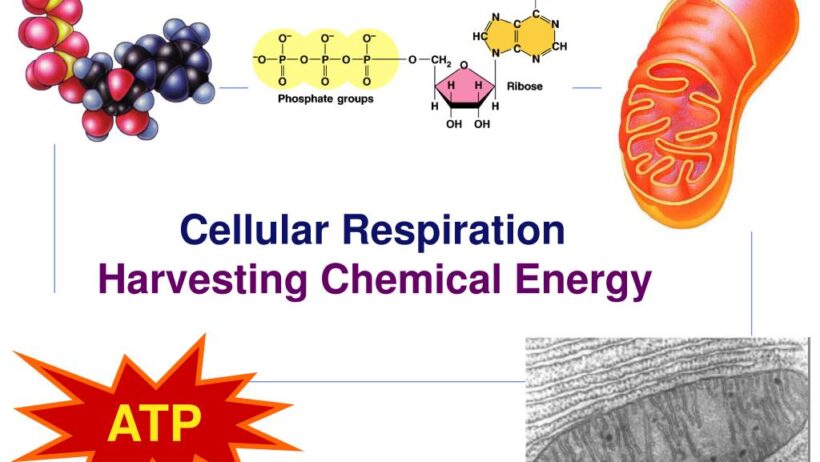Cellular respiration is an essential biological process that plays a crucial role in energy conversion within living organisms. It parallels the way consumers utilize substances to generate energy, akin to how power plants convert fuel into electricity. This process raises an intriguing question: Is cellular respiration efficient in conserving energy? To delve into this topic, it is essential to understand the intricate mechanisms involved, the biochemical pathways engaged, and the comparative energetics between cellular respiration and other forms of energy transformation.
At its core, cellular respiration encompasses a series of metabolic processes that cells utilize to harvest chemical energy from organic molecules. The primary substrates for these processes are carbohydrates, lipids, and proteins, which undergo a series of enzymatic reactions. The most familiar form of cellular respiration is aerobic respiration, which necessitates oxygen to efficiently extract energy stored in glucose molecules. This process can be broken down into four significant stages: glycolysis, the citric acid cycle, the electron transport chain, and oxidative phosphorylation.
The efficiency of energy conservation during cellular respiration can be observed in the preliminary step known as glycolysis. It occurs in the cytoplasm, where one molecule of glucose is converted into two molecules of pyruvate, releasing a modest yield of two molecules of ATP—adenosine triphosphate, the cell’s primary energy currency. Although glycolysis is not an energy-intensive process in its own right, it sets the stage for subsequent reactions that enhance overall energy yield.
Following glycolysis, the pyruvate enters the mitochondria, where the citric acid cycle, also known as the Krebs cycle, commences. This cycle facilitates further breakdown of organic substrates and produces high-energy electron carriers, namely NADH and FADH2. The cycle embodies a series of intricate chemical transformations leading to the direct production of two more ATP molecules per glucose molecule, albeit the real payoff lies in the reduction of electron carriers—products that will drive the electron transport chain.
The electron transport chain (ETC) represents a pivotal juncture in the quest for energy conservation. Here, the NADH and FADH2 produced in previous stages are oxidized, transferring electrons through a series of membrane-bound protein complexes located in the inner mitochondrial membrane. These electrons traverse the chain, producing a proton gradient across the membrane that drives ATP synthesis via ATP synthase. Ultimately, this process results in the generation of approximately 26 to 28 ATP molecules from a single glucose molecule, depending on the organism and specific conditions.
However, the efficiency of cellular respiration does not solely reside in the quantity of ATP produced. It is essential to consider the concept of energy yield relative to the energy input. In total, the net yield from one glucose molecule during aerobic respiration is about 30 to 32 ATP molecules. While this may seem substantial, it is critical to note that approximately 40% of the energy in glucose is captured and utilized in cellular activities, with the remaining energy dissipated as heat—a byproduct of the inefficiencies inherent in biochemical processes.
This inefficiency leads to questions regarding the evolutionary significance of cellular respiration. From an ecological standpoint, the balance between energy capture and loss reflects the adaptive strategies of organisms to thrive within their environments. For instance, certain anaerobic organisms have evolved alternative pathways such as fermentation to derive energy in the absence of oxygen. While fermentation is less efficient than aerobic respiration, yielding only 2 ATP per glucose molecule, it allows organisms to survive and reproduce in environments where oxygen is not available. Consequently, energy conservation efficiency becomes a trade-off between maximal energy extraction and ecological resilience.
The fascination with cellular respiration lies not only in its biochemical intricacies but also in its broader implications for understanding life processes. The efficiency of cellular respiration has profound ramifications for various fields, including medicine, environmental science, and biotechnology. For example, understanding how cells optimize energy production can inform strategies to combat metabolic diseases in humans, allowing for the development of therapies that enhance cellular respiration or targeted interventions for dysfunctional metabolic pathways.
In the context of energy conservation, the efficiency of cellular respiration is pivotal in assessing the energy dynamics of carbon cycling within ecosystems. Plants, algae, and photosynthetic bacteria capture solar energy through photosynthesis, converting it to chemical energy stored in glucose, fueling cellular respiration in themselves and organisms that consume them. This intricate web of energy transformation emphasizes the interconnectedness of life and underscores the necessity for sustainable practices in energy consumption and production.
Ultimately, the question of whether cellular respiration is efficient in conserving energy cannot be answered with a mere yes or no. Instead, it is a complex interplay of biochemical processes, evolutionary adaptations, and ecological contexts. While cellular respiration conserves energy to a notable extent, the inherent inefficiencies and the biochemical trade-offs involved reveal a deeper understanding of energy dynamics in biological systems. This understanding is imperative for promoting environmental conservation and ensuring that energy systems remain viable as the demand for sustainable practices continues to grow. The study of cellular respiration not only illuminates the pathways of energy flow within cells but also serves as a potent reminder of the delicate balance that sustains life on Earth.








